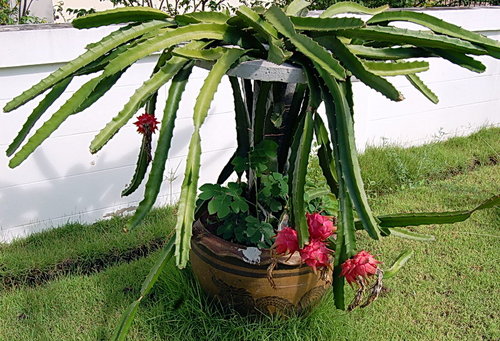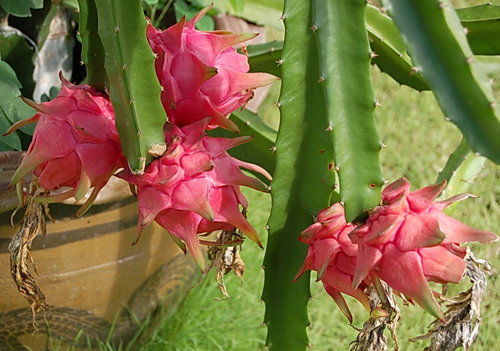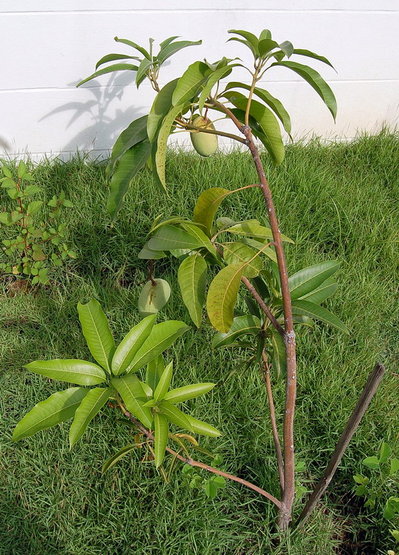A few months ago I wrote about the dragonfruit trees in our backyard secretly blooming at midnight. Well, these are pitaya by day:

Bob must have been thinking of pitaya when he named his famous album.

These are the red-fleshed variety, which only grow half as big as the white-fleshed ones.
As it turns out, the universal truth about fruit (“best when fresh picked and grown organically with water buffalo cakes as fertilizer”) is especially true for pitaya: I can honestly say that the dragonfruit we grew tasted better than any I have tried until now, and I have tried many from roadside stands and markets alike. In fact, growing them naturally raised the overall flavor from “disappointing considering how exotic it looks / slightly and boringly sweet” to “tasty, almost delicious.” Overall, a wonderful result: I love seeing stacks and stacks of dragonfruit being sold at the roadside fruit stalls, but I’ll never buy one again.
//////////////////////////////////////////
Bonus tropical fruit shot:

Our baby mango trees are already bearing fruit and straining under the weight!




